Hybrid Solar Eclipses
🌞 🌑 🌎
Also called annular/total eclipse. Such an eclipse is both total and annular along different sections of its umbral path.
Hybrid eclipses are comparatively rare. Image Credit & Copyright: Left: Fred Espenak – Right: Stephan Heinsius
Description of the background image above…
A spectacular geocentric celestial event of 2005 was a rare hybrid eclipse of the Sun! Depending on the observer’s location, total or annular eclipse was visible. April 20, 2023 is another hybrid eclipse!
For Fred Espenak, aboard a gently swaying ship within the middle of the Moon’s shadow track about 2,200 kilometers west of the Galapagos, the eclipse was total, the lunar silhouette exactly covering the bright solar disk for a few brief moments. His camera captured a picture of totality revealing the extensive solar corona and prominences rising above the Sun’s edge.
But for Stephan Heinsius, near the end of the shadow track at Penonome Airfield, Panama, the Moon’s apparent size had shrunk enough to create an annular eclipse, showing a complete annulus of the Sun’s bright disk as a dramatic ring of fire. Pictures from the two locations are compared above.
How rare is such a hybrid eclipse? Calculations show that during the 21st century just 3.1% (7 out of 224) of solar eclipses are hybrid while hybrids comprise about 5% of all solar eclipses over the period 2000 BC to AD 3000. Today’s hybrid solar eclipse is most widely visible beyond the central shadow track as a brief partial eclipse from northeastern Americas through Africa, and along the track in an annular phase for only the first 15 seconds. SOURCE: NASA / APOD
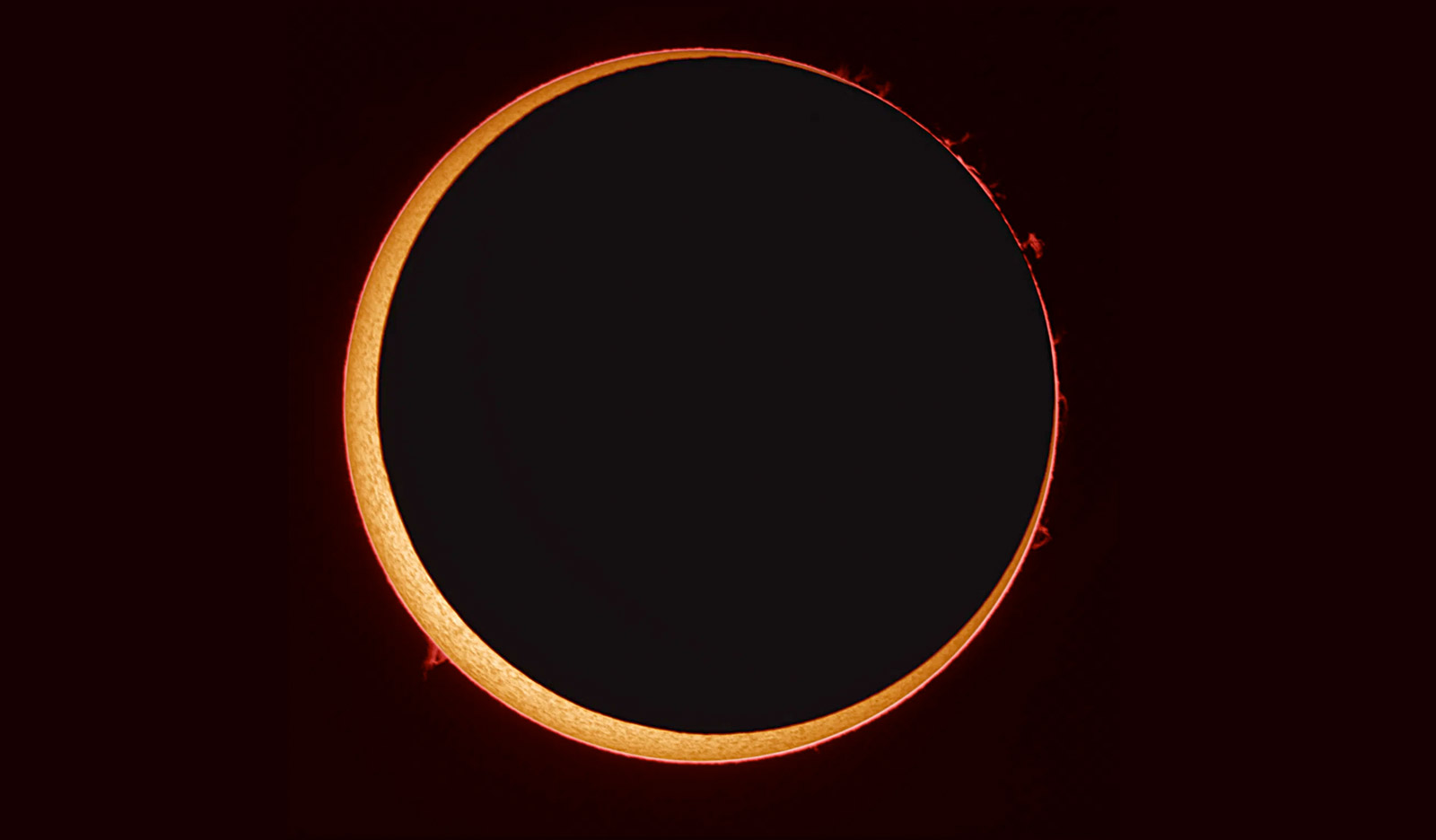
Photo Credit: Stefan Seip
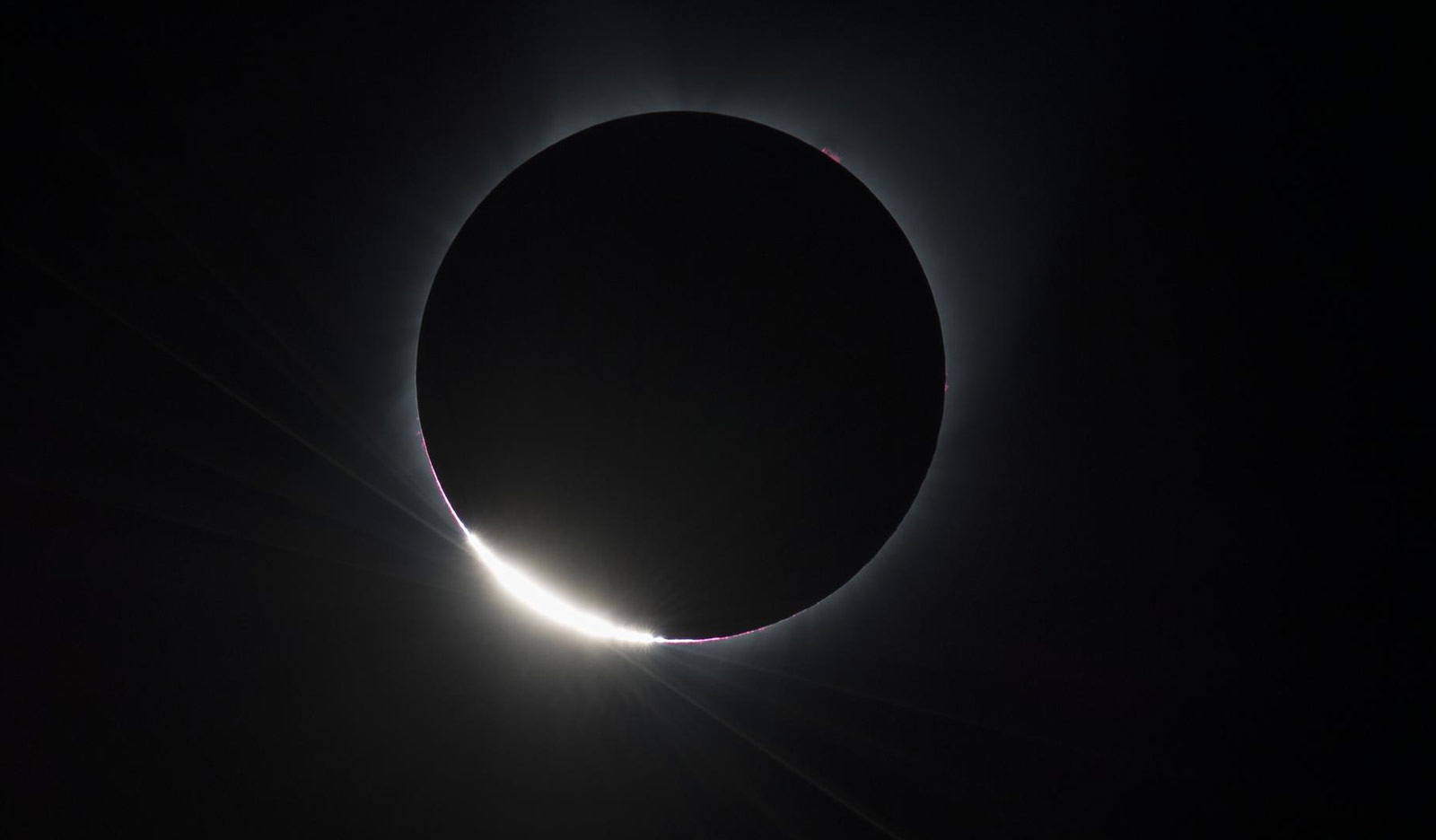
Photo Credit: NASA/Aubrey Gemignani
FEATURED ECLIPSES
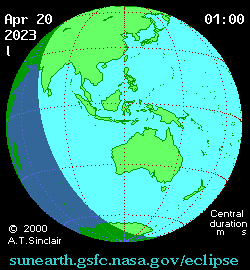
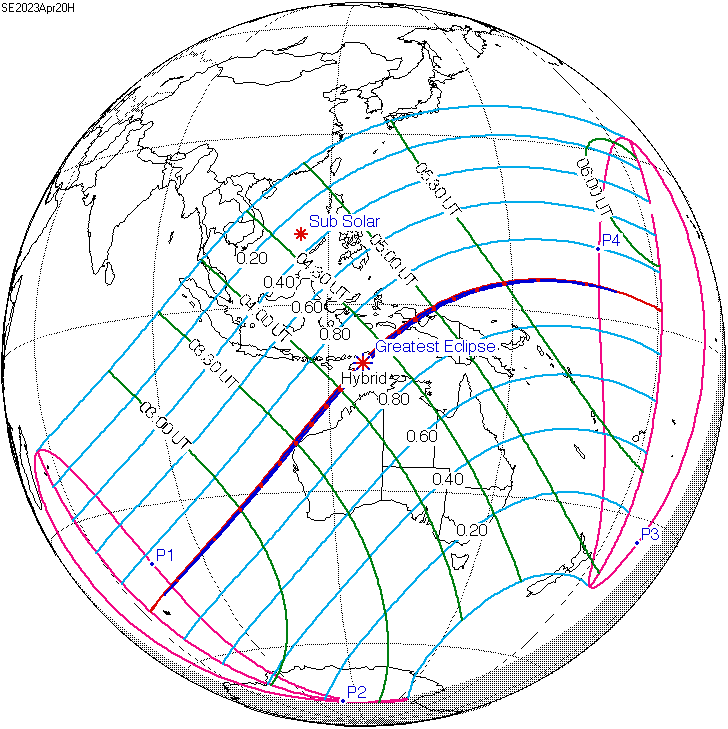
Hybrid Solar Eclipse of April 20, 2023
Totality for this eclipse will be visible in the North West Cape peninsula and Barrow Island in Western Australia, eastern parts of East Timor, as well as Damar Island and parts of the province of Papua in Indonesia.
It is a hybrid eclipse, with portions of its path near sunrise and sunset as annular.
- Gamma: -0.3952
- Magnitude: 1.0132
- Maximum Eclipse Duration: 76 sec (1 m 16 s)
- Coordinates: 9.6°S 125.8°E
- Max. width of band: 49 km (30 mi)
- Greatest Eclipse: 4:17:56 (UTC)
- Saros: 129 (52 of 80)
- Catalog: # (SE5000) 9559
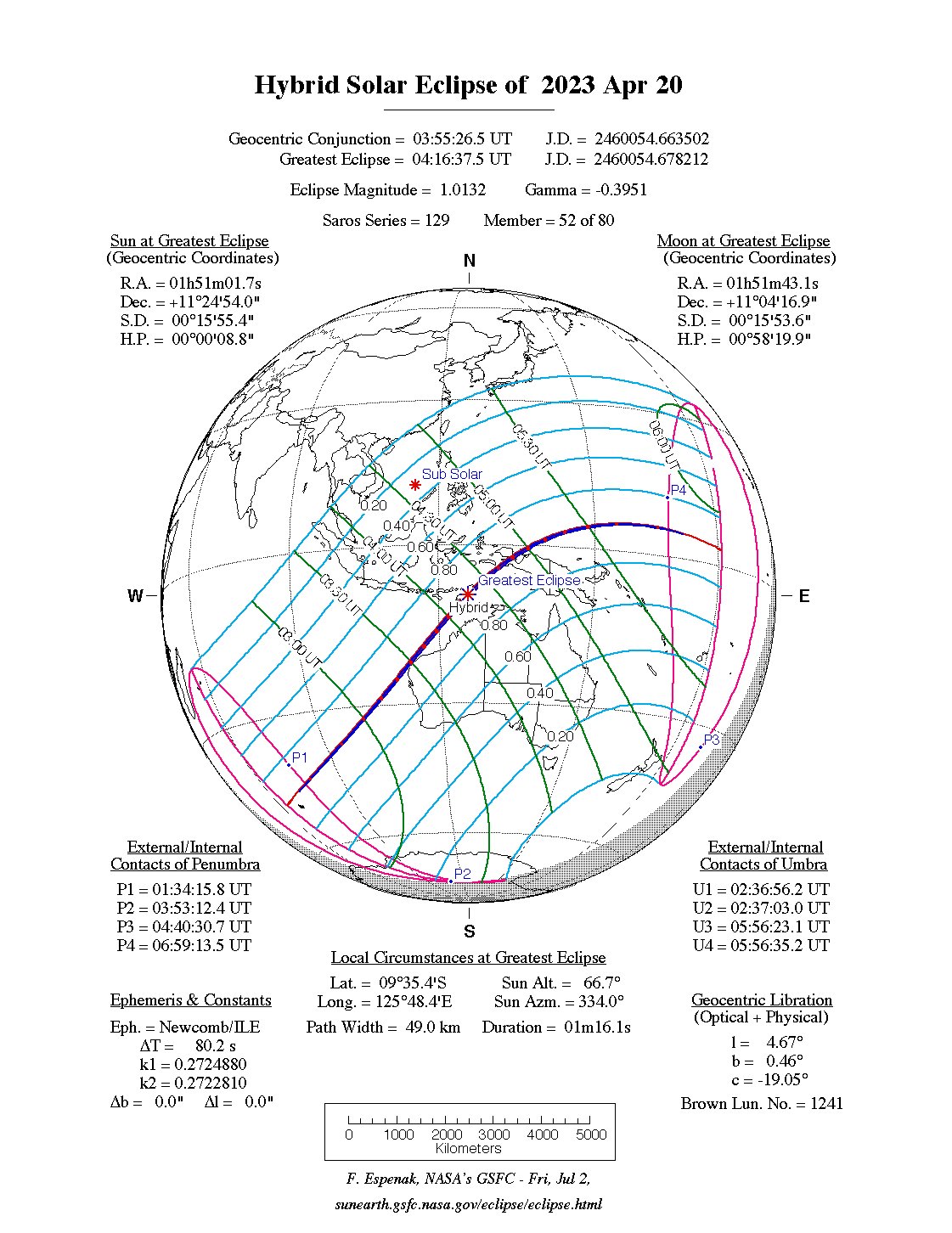
PROTECT YOUR EYES!
Looking directly at the sun is unsafe except during the brief total phase of a solar eclipse (“totality”), when the moon entirely blocks the sun’s bright face, which will happen only within the narrow path of totality.
If you’re in the path of the annular eclipse portion or for the partial eclipse, at no time will this be safe to view with the naked eyes.
Be sure to carefully read the details to understand how to protect your eyes! Homemade filters or ordinary sunglasses, even very dark ones, are not safe for looking at the uneclipsed or partially eclipsed Sun.
Partial Solar Eclipse
If you’re not in the direct path for the total solar or annular eclipse portion of the event—but still within the outside of the path—this is what you may have seen with proper eye protection.
In some places, viewers didn’t get to see this ring around the Moon. However, they experienced a partial solar eclipse if within range as the map above shows. This happens when the Sun, Moon, and Earth are not exactly lined up. The Sun will appeared to have a dark shadow on only part of its surface. Viewers in parts of the eastern United States and northern Alaska saw a partial solar eclipse on June 10, along with much of Canada and parts of the Caribbean, Europe, Asia, and northern Africa.
In the United States, the partial eclipse was visible along parts of the Southeast, Northeast, Midwest, and in Northern Alaska. In many of these locations, the eclipse will occur before, during, and shortly after sunrise. This meant that viewers will need to get a clear view of the horizon during sunrise in order to see the eclipse.




